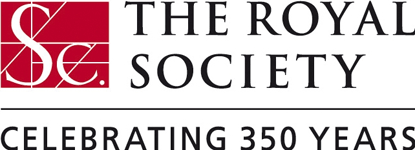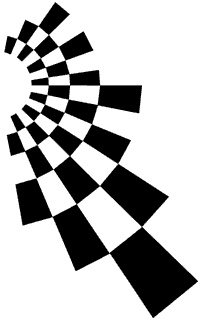
Nottingham Visual Neuroscience
School of Psychology
Funding
The group receives funding from the BBSRC, The Wellcome Trust, The Leverhulme Trust European Framework Seven and The Royal Society and has also been supported by numerous schemes within the University of Nottingham
We have recently held the following project grants (further details below):
- Measuring the detailed topography and neural correlates of attention in somatosensory cortex with high-resolution fMRI
Denis Schluppeck & Sue Francis, BBSRC project grant; 2009-2012 - The computation mediating perceptual decisions
Ben Webb, Wellcome Trust Research Career Development Fellowship; 2008 - 2013 - Building contours from edges in mid-level vision
Jonathan Peirce & Stephen Coombes, Wellcome Trust Project Grant; 2008-2011 - Imaging function and dysfunction of neuronal circuits in the visual cortex
Paul McGraw & Ben Webb, European Framework Seven; 2008-2011 - Decoding saccade direction from human brain activity
Denis Schluppeck, Royal Society Award; 2007-2008
- Neural Mechanisms of Perceptual Learning
Ben Webb, Leverhulme Trust Early Career Development Fellowship; 2006-2008 - An Investigation of Visual and Auditory Motion
Processing in the Human Cerebral Cortex
Paul McGraw, Wellcome Trust Fellowship and Project Grant; 2005 - 2008 - Perceptual Mechanisms Underlying the Analysis of
Texture-defined Movement in Human Vision
Tim Ledgeway, BBSRC Project Grant; 2005 - 2008 - Putting it back together: combining edges into
features in mid-level visual processing
Jonathan Peirce, BBSRC Project Grant; 2005 - 2008
 |
The computation mediating perceptual decisionsBen Webb Wellcome Trust Research Career Development Award |
The brain uses sensory information to make evolutionary stable decisions. Psychophysical studies often describe the computations mediating the transformation from sensory input to perceptual decision in terms of image-based statistics (e.g. average direction of image motion), whereas physiological studies claim that decisions are generated by cortical networks that decode ongoing neuronal activity in sensory cortex (e.g. preferred direction of image motion signalled by most active neuronal population). We do not know which approach provides the best account of the computations mediating perceptual decisions. The proposed research will combine human psychophysics, computational modelling and extracellular physiological recordings to: (1) determine whether image-based statistics or neuronal population decoding provides a more accurate and robust account of the computational steps leading to human perceptual decisions. These are not necessarily mutually independent decision strategies (i.e. an image statistic might itself be the attribute decoded from the neuronal population to make a decision) and the proposed research will also consider this possibility; (2) determine whether single neuron responses in visual area MT use flexible decision strategies to guide behaviour as more visual information is accumulated over time; and (3) determine whether common decision mechanisms are used by the perceptual and motor systems.
 |
Building contours from edges in mid-level visionJonathan Peirce & Stephen Coombes |
We understand a great deal about the workings of V1 neurons but rather little about the next stages of visual processing. LGN cells combine signals from photoreceptors to form contrast-selective units. V1 cells build on the outputs of the LGN and respond selectively to particular local Fourier energies (so are often characterised as visual edge detectors). The logical extensions of the system are mechanisms that respond selectively to particular conjunctions of those energies. The work will determine the existence and properties of such ‘conjunction detectors’, particularly those sensitive to curvature, using psychophysics, fMRI and computational modelling.
 |
Imaging function and dysfunction of neuronal circuits in the visual cortexPaul McGraw & Ben Webb |
A European Consortium of scientists coordinated by Dr. Christiaan Levelt (Netherlands Institute for Neuroscience) has been awarded a seventh framework grant. The functional and structural organization of visual cortex during normal development, plasticity and pathology will be investigated using innovative techniques developed by the Consortium. The knowledge accrued will be translated into novel interventions that both increase plasticity in the adult brain and treat amblyopia ('lazy eye' - the most prevalent visual disorder among young people.) Members of the consortium will use chronic in vivo two photon imaging of calcium responses in visual cortex. Using this powerful new methodology, it will study how experience changes the structure and function of individual neurons in visual cortex and how this affects the coding of visual information. In addition, learning paradigms that ameliorate the visual deficit in amblyopia will be developed in animal models and human subjects and ultimately translated into new treatments for amblyopia. Finally, the molecular and cellular mechanisms that limit plasticity in the adult visual system will be investigated with the aim of promoting experience-dependent plasticity in the adult brain. The knowledge accrued from this work has the potential to be exploited not only for the treatment of amblyopia but also for other CNS disorders from which recovery is limited by restricted neural plasticity - including brain tumors, stroke, degenerative diseases and trauma.
The members of the consortium are Drs. Thomas Mrsic-Flögel (University College London, UK), Tommaso Pizzorusso (University of Florence, Italy), Mark Hübener and Oliver Griesbeck (Max-Planck-Institute for Neuroscience, Germany), Frank Sengpiel (Cardiff University, UK), Paul McGraw and Ben Webb (University of Nottingham, UK), Bitplane (Switzerland) and Mindweavers (UK)
 |
Decoding saccade direction from human brain activity: measuring specificity with functional magnetic resonance imaging at 7TDenis Schluppeck Royal Society Award |
The project’s aims are to use data obtained from magnetic resonance imaging (fMRI) at very high spatial resolution to predict the responses (direction of delayed saccadic eye movements) based on the measured responses in parietal/frontal cortex. Much is known about neural responses in human parietal and frontal cortex at spatial scales of 27mm^3 and larger - the scale of most imaging experiments. The proposed experiments will combine the exquisite signal-to-noise ratio available at high-field (7T) with new sophisticated statistical tools to probe these areas at much higher spatial resolution, around 1-2mm^3.
Neural Mechanisms of perceptual learningBen Webb Leverhulme Trust Early Career Fellowship |
Practice improves our ability to detect and distinguish sensory stimuli. The perception of most, if not all, sensory attributes improves with practice and the perceptual benefits are realized over many years. When making challenging sensory judgements that demand focused attention, practice-induced perceptual improvements are tightly coupled to the particular task and stimulus arrangement used during the initial training period. The nature of this specificity is thought to signify which population of neurons is solving the task or encoding the learned stimulus. The proposed research will decouple the task and stimulus-specificity of perceptual learning in order to fully understand and identify the neural locus of the plastic mechanisms mediating the learning process. The results of this research will provide a vital platform for a growing body of research developing perceptual learning as a non-invasive clinical tool for treating common visual disorders, such as amblyopia (‘lazy eye’).

